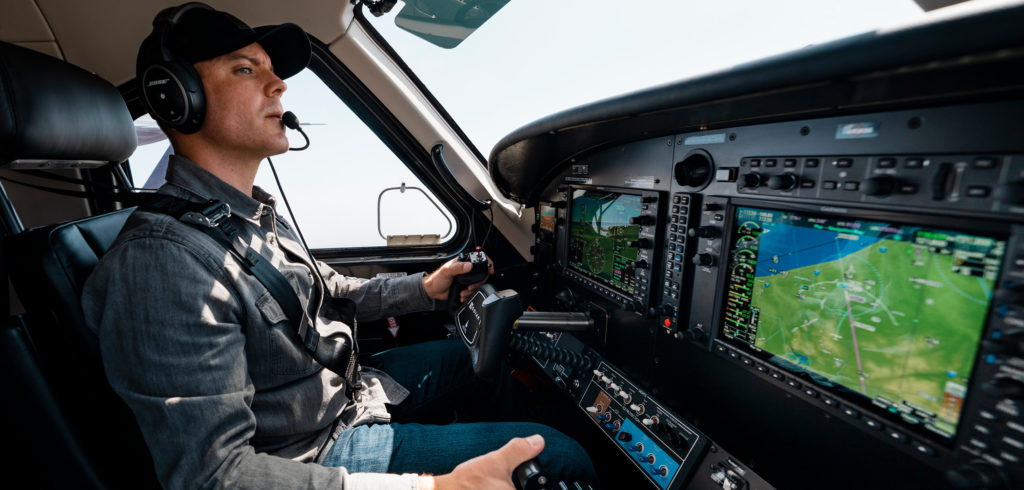Daher has unveiled the Kodiak 900, a larger and faster version of the Kodiak 100, at AirVenture Oshkosh.
Inheriting the Kodiak 100’s qualities as a “backcountry STOL (short take-off and landing) and multi-role” aircraft, the Kodiak 900 has fuselage length extension of 3.9ft to provide more passenger room and cargo space. Cruise speed has increased to 210ktas, and the aircraft has a greater useful load while offering a maximum range of 1,129 nautical miles. Operating economics have been improved, with a 9% reduction in specific fuel consumption.
“This is another answer to the commitment of enhancing sustainability and improving the carbon footprint of general aviation,” said Nicolas Chabbert, senior vice president of Daher’s Aircraft division. “The Kodiak 900 is in a category of its own: a highly versatile unpressurised utility turboprop airplane that can carry impressive payloads while cruising comfortably at 210kts in refined luxury.”
The Kodiak 900 was certified by the US FAA on 20 July 2022, and deliveries will begin in 2023. Production of the Kodiak 900, along with the Kodiak 100 in its latest Series III version, is performed at the Sandpoint, Idaho, facility of Daher’s Aircraft division.
“Today’s official unveiling of the Kodiak 900 underscores the Daher parent company’s firm commitment to the constant improvement of its aircraft product line,” said Daher CEO Didier Kayat. “It follows our launch of the latest TBM family member – the TBM 960 – just three months ago.”
The Kodiak 900’s stretched fuselage provides a total cabin volume increase of 20% to 309ft³. It features an all-new interior that Daher said couples its expertise in creating luxurious interiors for the TBM aircraft family with the Kodiak’s rugged heritage to result in a cabin that is versatile and well-appointed.
With the new Summit+ passenger seats, which are multi-directional, the Kodiak 900 responds to a wide array of user requirements and mission profiles. The interior can be arranged in multiple configurations – from a double-club layout to an all-forward-facing arrangement. The Summit+ seats – which also are being used in the Kodiak 100’s upgraded interior – can be removed entirely for maximum space and payload. Individual amenity panels are now at every seat – including USB-a and USB-c ports, LEMO aircraft-powered headset jacks, cupholders and phone holders.
The new seats come with quick-release handles that allow them to easily slide in the seat tracks or be removed entirely by one person without the need for tools or specialised equipment. Each seat reclines and has two armrests and a headrest with bolstering and padding.
The cabin is designed to retain the Kodiak 100’s versatility. There are cargo tie-downs throughout. Cargo carrying capability and three entry/exit doors enable the entire cabin to be used for cargo, if needed.
A new colour palette has been introduced for the Kodiak 900’s standard interior. The seats come in black, and weather-resistant black carpeting is installed throughout. The sidewalls, headliner and rear bulkhead utilise the popular composite material from the Kodiak 100. Sound-damping has been incorporated to the Kodiak 900’s unpressurised interior.
One of the most apparent differences in the Kodiak 900’s airframe is the addition of a fifth set of passenger windows.

Daher said the airframe has been re-engineered to maintain robustness, and refinements have been introduced in a major effort to reduce drag – with such changes as replacing the external pilot entry step with a foldable ladder, as well as adding flaptrack covers on the wing and wheel fairings to the landing gear. An internal airflow “clean up” was performed as well, with the ducts, inlets and air intakes redesigned, modelled and engineered for low drag. The use of wheel fairings is another of the Kodiak 900’s noticeable visual differences.
As the Kodiak 900 sits higher in the rear than the Kodiak 100, a complete redesign of the rear main cargo door was made. The integration of additional steps creates an easier entry and exit point for passengers, while also facilitating the loading of payloads. There is an added handhold to assist with the added height of the aircraft on entry/exit. The door retains the Kodiak’s clamshell design with fold-flat capability.
Daher’s Kodiak Care four-year maintenance programme includes scheduled maintenance of the aircraft up to 1,000 total flight hours, or through the fourth annual inspection.
The Kodiak 900 is powered by Pratt & Whitney Canada’s 900-shaft horsepower PT6A-140A turboprop engine, and features a new constant-speed, full-feathering and hydraulically actuated five-blade composite propeller from Hartzell.
Development of the Kodiak 900 began in 2016. Three test aircraft have been built to date: a static test airframe for structural testing, a flying prototype for flight testing, and the first conforming production aircraft for FAA function and reliability testing. The maiden flight of the Kodiak 900 occurred on 28 February 2020. The test programme has accumulated more than 600 hours of flight testing and 800-plus hours of ground runtime across the test fleet.




